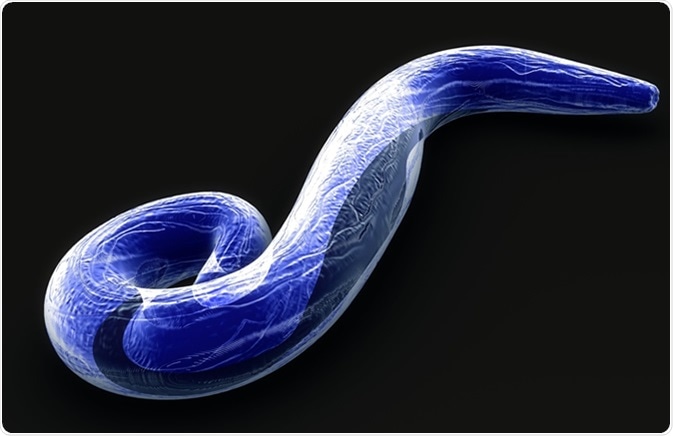buy hydrochlorothiazide au no prescription

Calcium is essential for the correct functioning of the cell and requires regulation to avoid high concentrations causing cell death.
Calcium ions are important for cell signaling as the binding of Ca2+ to proteins leads to changes in their activity. Many eukaryotes maintain low calcium ion concentrations by isolating Ca2+ within intracellular compartments. The mechanism by which the malaria parasite, Plasmodium falciparum, buy generic mircette maintains the level of intracellular calcium has puzzled scientists for decades.
Plasmodium falciparum survives in the cytosolic environment of red blood cells (RBCs) where conditions include low levels of Ca2+. Understanding calcium homeostasis in Plasmodium falciparum is important because increased levels of Ca2+ may signal important infection events such as invasion or gene expression.

Challenges to Understanding Calcium Homeostasis in Plasmodium falciparum
Plasmodium falciparum function in a range of environments from the high extracellular Ca2+ concentrations within blood plasma to the relatively low concentrations found in host cells. Understanding how calcium homeostasis is performed in different environments is challenging because Ca2+ regulators, transporters and channels, which resemble mammalian counterparts, have not been identified in the Plasmodium genome.
Certain genes have been identified but their role in calcium homeostasis is not clear. For example, genes for Ca2+ -dependent protein kinases have been discovered but the functional role of these kinases is not understood.
The endoplasmic reticulum (ER) has been shown to sequester Ca2+ through a thapsigargin-sensitive ATP-dependent Ca2+ pump in addition to the discovery of an ER-associated Ca2+-binding protein. This indicates that the ER in Plasmodium falciparum has a role in regulating the concentration of calcium ions and may also be a source for Ca2+ mobilization, as occurs in other cells.
Nonetheless, no homologues have been found that enable the Ca2+ efflux from the ER through similar channels and receptors to those found in eukaryotic models. Other organelles have been proposed to have a function in storing Ca2+ but their role in calcium signaling has not been determined.
Calcium Uptake within Red Blood Cells
It has been observed that after infection by Plasmodium falciparum, RBCs increase the total number of Ca2+ in comparison to non-infected cells. Infection also causes the enhanced permeability of RBC membranes to ions. Tested in 2003, A potential model for producing the necessary Ca2+ gradient, allowing calcium ion signaling within the malaria parasite.
When RBCs are invaded by Plasmodium falciparum, a parasitophorous vacuole is formed around the parasite preventing exposure to the host cytosol. The parasitophorous vacuole membraneis produced from components of both the parasite and RBC membrane. The initial Ca2+ ATPase pump within the RBC plasma membrane that moves Ca2+into the extracellular space changes after the formation of a parasitophorous vacuole.
The pump now faces the parasite meaning Ca2+ is transported from the host cytosol into the parasitophorous vacuole membrane.
The model was tested using fluorescent Ca2+ indicators to demonstrate that the fluorochromes could be trapped within the parasitophorous vacuole and report the Ca2+ level. A decrease in Ca2+ concentration within the parasitophorous vacuole was found to affect the maturation of Plasmodium falciparum, showing that Ca2+ signaling is fundamental to the control of parasite development.
The results of the test indicate that the parasite is able to thrive in a low calcium ion environment through the formation of a gradient across the parasitophorous vacuole membrane.
Monitoring Calcium Ions in Plasmodium falciparum
The use of fluorescent Ca2+ indicators to examine calcium homeostasis in Plasmodium falciparum is limited because they cannot investigate Ca2+ in compartmentalized space as fluorochromes can occupy the cytosol, ER, mitochondria and digestive food vacuole.
A new method of detecting Ca2+ concentrations has been developed through a genetically encoded Ca2+ indicator, yellow cameleon-Nano (YC-Nano). The developed YC-Nano Ca2+ biosensors were able to detect nanomolar changes of Ca2+ concentrations.
Detection is provided through a cyan fluorescent protein (CFP) fused with the Ca2+ binding protein calmodulin, interacting with M13 peptide in the presence of Ca2+. Tests found that the biosensor was able to successfully measure changes of Plasmodium falciparum cytosolic Ca2+ meaning the method could be potentially employed for studying Ca2+ signaling in Plasmodium falciparum and for screening compounds that target calcium homeostasis.
Sources
- Garcia, S.R. 1999. Calcium homeostasis and signaling in the blood-stage malaria parasite, Parasitology Today, 15, pp. 488-491. https://www.ncbi.nlm.nih.gov/pubmed/10557149
- Camacho, P. 2003. Malaria parasites solve the problem of a low calcium environment, Journal of Cell Biology, 161, pp. 17-19. https://www.ncbi.nlm.nih.gov/pmc/articles/PMC2172879/
- Brochet, M. & Billker, O. 2016. Calcium signalling in malaria parasites, Molecular Microbiology, 100, pp. 397-408. https://www.ncbi.nlm.nih.gov/pubmed/26748879
- Pandey, K. et al. 2016. Ca2+ monitoring in Plasmodium falciparum using the yellow cameleon-Nano biosensor, Nature Scientific Reports, 6, e23453. https://www.nature.com/articles/srep23454
Further Reading
- All Plasmodium falciparum Content
- Phosphosignaling in Plasmodium falciparum
Last Updated: Sep 2, 2018

Written by
Shelley Farrar Stoakes
Shelley has a Master's degree in Human Evolution from the University of Liverpool and is currently working on her Ph.D, researching comparative primate and human skeletal anatomy. She is passionate about science communication with a particular focus on reporting the latest science news and discoveries to a broad audience. Outside of her research and science writing, Shelley enjoys reading, discovering new bands in her home city and going on long dog walks.
Source: Read Full Article